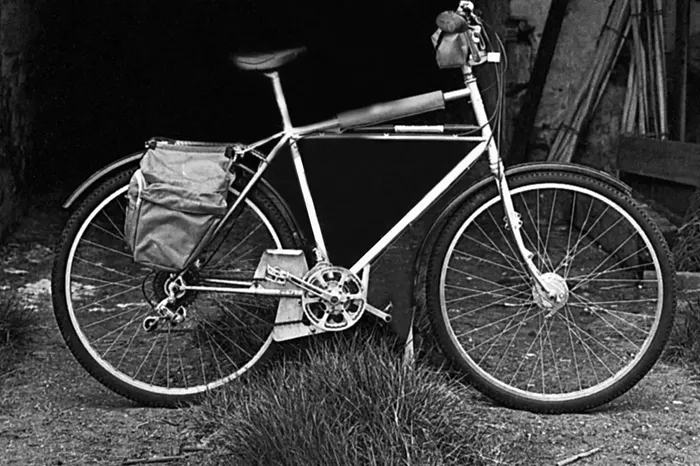Mountain biking is an exhilarating sport that offers a unique blend of adventure and physical challenge. However, many riders encounter a common issue: hand numbness. This condition can significantly affect your riding experience, making it uncomfortable and even dangerous. Understanding the causes of hand numbness and how to prevent it is crucial for every mountain biking enthusiast.
Causes of Hand Numbness
Hand numbness during mountain biking typically arises from several factors:
Nerve Compression: Prolonged pressure on the nerves in the hands and wrists can lead to numbness. The most commonly affected nerves are the ulnar, median, and radial nerves.
Poor Riding Position: An improper riding posture can place undue stress on your arms and hands, leading to discomfort and numbness.
Vibration: Riding over rough terrain generates vibrations that can travel through the handlebars to your hands, causing numbness over time.
Grip Pressure: A tight grip on the handlebars can restrict blood flow and increase pressure on the palms, resulting in numbness.
Cold Weather: Cold conditions can cause your hands to stiffen and reduce circulation, leading to numbness.
Methods to Prevent Hand Numbness
To enjoy a comfortable ride without the distraction of hand numbness, consider implementing the following strategies:
1. Adjust Your Riding Position
Sit Back in Your Seat: Leaning too far forward can increase pressure on your hands. Instead, sit back to engage your core and glutes, reducing strain on your arms.
Maintain a Neutral Spine: Keep your back straight and chest up to distribute weight evenly across your body. This posture helps engage your core muscles, relieving pressure from your hands.
2. Change Hand Positions Frequently
Utilize Multiple Hand Positions: Regularly switch between different hand positions on the handlebars—such as hoods, drops, and tops—to alleviate constant pressure on specific nerves. This variation helps distribute weight more evenly across your hands.
3. Relax Your Grip
Avoid Tension: A relaxed grip allows for better circulation and reduces pressure on the nerves. Remind yourself to loosen your grip periodically during rides.
Bend Your Elbows: Keeping a slight bend in your elbows absorbs some of the vibrations from the trail and reduces strain on your wrists.
4. Wear Proper Gear
Invest in Quality Cycling Gloves: Padded gloves provide cushioning that protects sensitive nerve endings in your hands, enhancing comfort during long rides.
Use Ergonomic Grips: Consider using grips designed to reduce pressure points. Thicker grips or those with a relief wing can help maintain a more natural hand position while riding.
5. Bike Fit and Setup
Get a Professional Bike Fit: Ensuring that your bike is properly fitted to your body size can significantly reduce discomfort. A professional fitting will adjust saddle height, handlebar position, and reach according to your individual needs.
Tune-Up Your Bike: Regular maintenance of your bike’s suspension system can help absorb shocks better, reducing vibrations transmitted through the handlebars.
6. Strengthening and Stretching Exercises
Incorporate Core Strengthening Exercises: A strong core supports better posture while riding, which can alleviate pressure from your arms and hands.
Stretch Before Rides: Stretching improves flexibility and blood flow in your arms and hands, reducing the risk of numbness during rides.
7. Stay Hydrated
Drink Plenty of Water: Dehydration can lead to muscle cramps and reduced circulation. Staying hydrated helps maintain optimal blood flow throughout your body, including your hands.
Conclusion
Hand numbness is a common issue faced by mountain bikers but can be effectively managed with proper techniques. By adjusting your riding position, frequently changing hand positions, relaxing your grip, wearing appropriate gear, ensuring a proper bike fit, incorporating strength exercises, stretching before rides, and staying hydrated, you can significantly reduce or even eliminate hand numbness during mountain biking.
Remember that every rider’s body is different; what works for one person may not work for another. It’s essential to listen to your body and make adjustments as needed. If you continue experiencing persistent numbness despite these efforts, consulting with a medical professional may be necessary to rule out any underlying conditions.
By taking proactive steps to prevent hand numbness, you can enhance your mountain biking experience and focus on what truly matters—enjoying the ride!
Related topics:
- Why Do My Hands Go Numb While Mountain Biking?
- Why Is Mountain Biking Good for You?
- Why Do They Blow Whistles in Mountain Biking?

